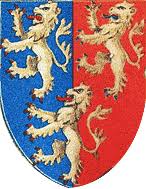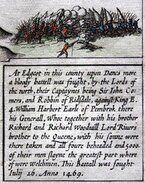And through a fault it was lost:
At Banbury the vengeance was exacted
Upon fair Wales, and the great fine.
There was heard all at once
Crying of battle between great spears.
"I was killed, I and my nation too."
The moment that this Earl was killed"
With regard to the execution of Richard Herbert contemporary sources state that he was executed on the day of the battle. His body was taken to Abergavenny and interred at St Mary’s Priory.
So why did Richard Neville have Herbert executed without trial? Well, they were rivals, this was due in part to Herbert’s influence with Edward IV, his increasing power in Wales and the relationship between Herbert and the family of Elizabeth Woodville, this Warwick saw as a threat to his influence in the royal court. Therefore, the answer is quite simply revenge.
You can read more on the subject of revenge in my blog Vengeance in Mine.
meanderingthroughtime.weebly.com/wars-of-the-roses-blog/vengeance-is-mine



 RSS Feed
RSS Feed
